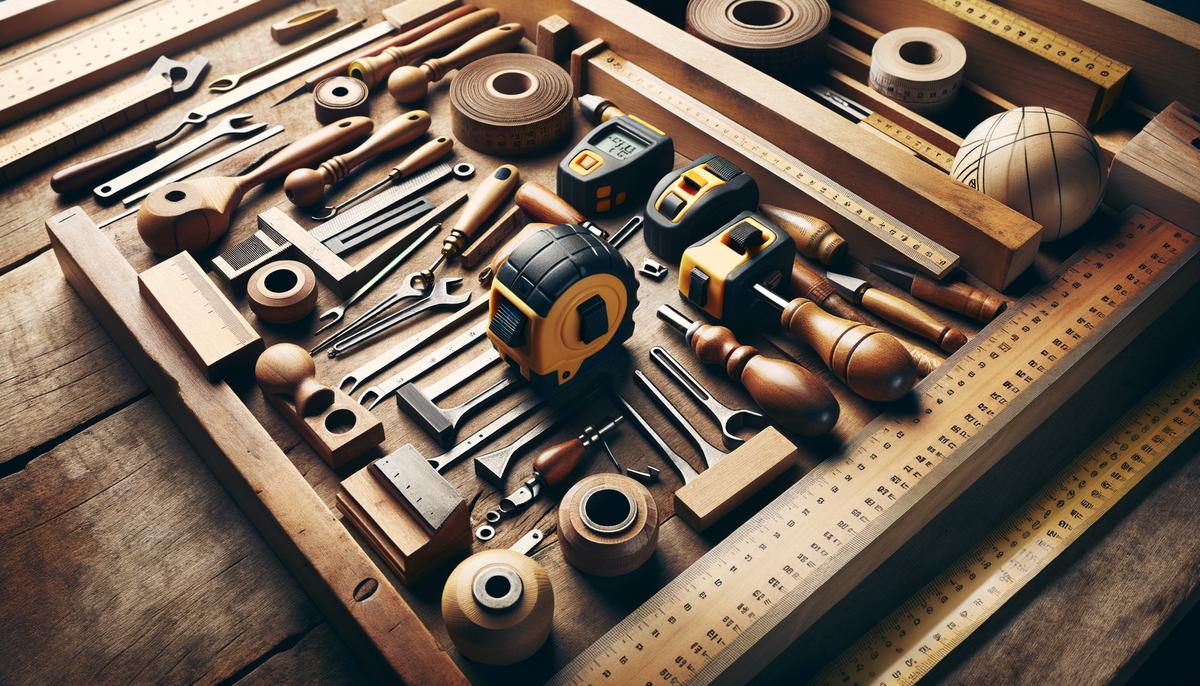Cutting Tools
Circular saws are versatile cutting tools. With a sharp, spinning blade that easily cuts through wood, they're ideal for straight cuts. This workhorse comes in corded and cordless options. Corded saws typically offer more power for heavy-duty cuts, while cordless models allow convenient mobility around your workspace.
Blades are crucial. Opt for a combination blade with carbide teeth for general use, handling both rip cuts (along the grain) and crosscuts (across the grain). For specialized projects, you might need dedicated blades for each cut type. Blade size matters too – standard is 7 1/2 inches, but larger sizes are available for bigger projects.
Jigsaws excel at curved and intricate cuts. With a thin, reciprocating blade, they carve shapes a circular saw can't. Great for projects needing finesse, jigsaws come corded for maximum performance or battery-powered for flexibility. Different blade types cater to various materials and cut quality needs.
Compound miter saws are ideal for precise angle cuts, with a circular saw mounted on an arm that tilts and pivots for perfect miter and bevel cuts. Blade sizes range from 10 to 12 inches, with larger sizes handling thick lumber and wide boards. Consider a sliding model for cutting wider pieces while maintaining accuracy.
Never underestimate a good hand saw. Indispensable for detailed work and fine-tuning, ripping handsaws cut along the wood grain, while crosscut handsaws cut across it. Specialized types include dovetail saws for intricate joinery and coping saws for detailed interior cuts, offering precision and control.
When choosing cutting tools, consider blades and power options. Combination blades often strike a good balance for various tasks, while corded tools deliver consistent power but limited mobility, and cordless tools offer freedom but may need frequent battery changes for extensive projects.

Measuring and Marking Tools
Measuring and marking tools are crucial for precision woodworking. A quality tape measure is a must-have, with a sturdy, locking mechanism and easy-to-read scale. Invest in a 25-foot model for versatility.
Squares ensure accurate cuts and joints, including:
- Framing squares for larger projects
- Combination squares for checking angles and serving as rulers or gauges
- Speed squares for quickly marking lines and verifying common angles
- Try squares for checking right angles
- Miter squares for precise miter cuts
- Bevel gauges for transferring custom angles
Marking gauges help mark lines at set distances from edges, essential for joinery. Wheel marking gauges cut clean, visible lines, while pin marking gauges leave rougher marks. Combination gauges offer both options.
Levels ensure your workbench and projects are level and plumb, whether small spirit levels or laser levels for larger setups.
Precision in measuring and marking leads to tighter joints, properly fitting parts, and a professional finish. Even slight errors can compound, resulting in misalignment or structural issues. Investing in quality tools sets the foundation for success.

Power Tools for Shaping and Assembling
Cordless drills offer flexibility for drilling holes and driving screws without cords. Look for at least 18-volt models with variable speed and multiple clutch positions for adjusting torque based on the task. Ergonomic designs and comfortable grips reduce fatigue during extended use.
Random orbital sanders leave smooth, swirl-free finishes thanks to their dual-action spinning and vibrating motion. Variable speed control adjusts sanding intensity, while built-in dust extraction keeps your workspace clean and safe. Comfortable grips reduce hand fatigue.
Planers attain uniform thickness and smooth surfaces by shaving thin layers from wood. Hand-held electric models are portable and great for edge work, while larger benchtop planers handle bigger pieces with precise control. Prioritize powerful motors, high cutter head speeds, adjustable depth settings, and safety features.
When choosing power tools, consider power, versatility, ease of use, durability, and safety features. Quality tools make the process faster and enhance the final product's finish, allowing you to create and assemble with confidence and precision.

Investing in quality cordless drills, random orbital sanders, and planers significantly improves woodworking efficiency and outcomes. These tools enhance speed and quality, enabling you to create with confidence and a professional finish.
Safety Equipment and Maintenance
Safety is paramount in woodworking. Every project brings unique challenges, but adhering to proper safety practices and maintaining your equipment ensures your work is both enjoyable and secure.
Safety Equipment
- Safety Glasses
Safety glasses are mandatory. They protect your eyes from sawdust, wood chips, and debris that might fly into your eyes. Ensure they fit well and are comfortable enough to wear for extended periods. Look for models with anti-fog and anti-scratch coatings. - Dust Masks
Wood dust can pose serious health risks, including respiratory issues and allergic reactions. A quality dust mask or respirator filters out fine particles from the air you breathe. For hazardous environments, consider a respirator with replaceable filters for enhanced protection against volatile organic compounds (VOCs). - Ear Protection
Many power tools produce noise levels that can harm your hearing over time. Invest in good-quality ear protection, such as earmuffs or earplugs, with a high Noise Reduction Rating (NRR) to effectively block dangerous noise levels. - Gloves
Gloves can protect your hands from splinters, cuts, and harmful substances. Look for gloves that provide a balance between protection and dexterity, like leather or synthetic gloves with reinforced palms. Be mindful when using gloves with power tools, as loose materials can catch in moving parts. - Proper Footwear
Wear sturdy, closed-toe shoes to protect your feet from falling objects like heavy lumber or tools. Steel-toed boots offer substantial protection, especially in a busy or equipment-heavy workspace.
Tool Maintenance
- Keeping Blades Sharp
Sharp tools are safer and more efficient. Dull blades require more force, leading to potential accidents. Regularly sharpen saw blades, planer knives, and chisels. Consider professional sharpening services for saw blades, and use honing guides and sharpening stones or systems like the Scary Sharp System for chisels and plane blades. - Regular Tool Checks
Inspect your tools before and after each use for signs of wear and tear, loose parts, or damage. Check cords, plugs, and safety guards for proper functioning. For battery-operated tools, ensure batteries hold a charge and are not expanding or leaking. - Cleaning and Lubrication
Residue buildup can impair tool performance and increase wear. Clean your tools after each use, removing sawdust and resin from blades and surfaces. Lubricate moving parts regularly with appropriate cleaning solutions and lubricants designed for woodworking tools. - Dust Collection Maintenance
Keep your workspace clean to improve safety and air quality, reducing respiratory risks. Maintain your dust collection system and shop vac in good working order. Regularly empty collection bags and check for blockages in hoses and vents.
Safe Practices
- Proper Tool Usage
Use each tool as intended, understanding its correct operation and limitations by reading manuals and following manufacturer guidelines. This minimizes misuse and potential accidents. - Work Area Organization
Maintain an organized and clutter-free workspace. Trips and falls are common causes of injuries. Ensure tools have designated spots when not in use, and workpieces and equipment are out of walkways. - Power Down
Always disconnect power tools from the power source before changing blades, bits, or doing any maintenance to prevent accidental startups. - Personal Awareness
Stay vigilant and aware of your surroundings. Avoid distractions, as they can lead to mishaps. If you're feeling tired, take a break, as fatigue can significantly impact your concentration and response times. - Proper Lifting Techniques
Many woodworking materials and tools are heavy. Use proper lifting techniques to avoid back injuries—lift with your legs, not your back, and get help when needed.
Prioritizing safety and regular maintenance in your woodworking practice fosters a secure working environment and prolongs the life and efficiency of your tools. Equipped with the right safety gear and a commitment to proper tool care, you're well on your way to a productive and enjoyable woodworking journey.

In woodworking, having the right tools isn't just about convenience—it's about achieving accuracy and quality in every project. By investing in reliable equipment and prioritizing safety, you set yourself up for success. Remember, precision is key, so measure twice, cut once, and enjoy the process of bringing your creations to life.
Leave a Reply